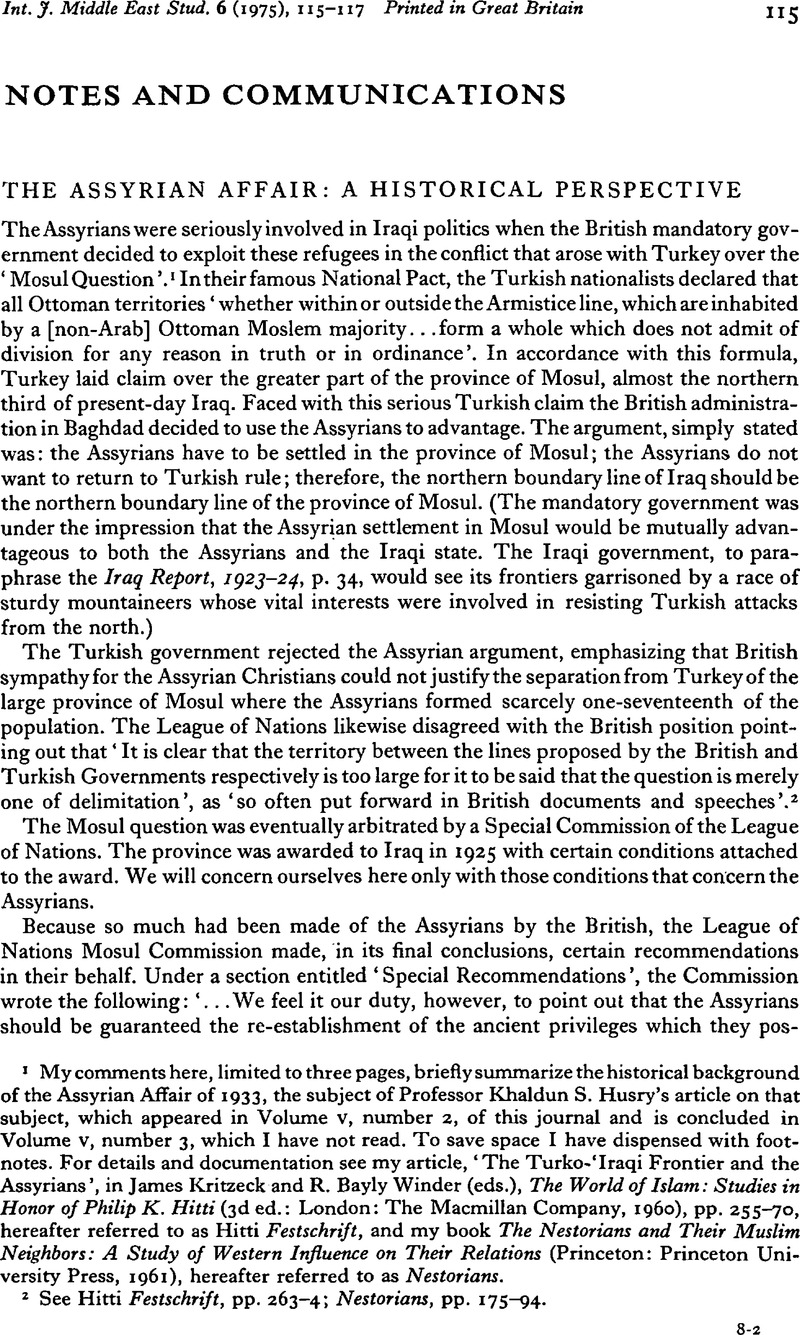Article contents
Notes and Communications
Published online by Cambridge University Press: 29 January 2009
Abstract

- Type
- Notes and Communications
- Information
- Copyright
- Copyright © Cambridge University Press 1975
References
page 115 note 1 My comments here, limited to three pages, briefly summarize the historical background of the Assyrian Affair of 1933, the subject of Professor Khaldun S. Husry's article on that subject, which appeared in Volume V, number 2, of this journal and is concluded in Volume v, number 3, which I have not read. To save space I have dispensed with footnotes. For details and documentation see my article, The Turko-'Iraqi, Frontier and the Assyrians', in JamesWinder, Kritzeck R. Bayly (eds.), The World of Islam: Studies in Honor of Philip K. Hitti (3d ed.: London: The Macmillan Company, 1960), pp. 255–70,Google Scholar hereafter referred to as Hitti, Festschrift, and my book The Nestorians and Their Muslim Neighbors: A Study of Western Influence on Their Relations (Princeton: Princeton University Press, 1961), hereafter referred to as Nestorians.Google Scholar
page 115 note 2 See Hitti Festschrift, pp. 263–4; Nestorians, pp. 175–94.Google Scholar
page 116 note 1 The British officials tried to falsify this clause to read and mean the prewar Assyrian homegrounds in Anatolia and not in the province of Mosul. See the Hitti Festschrift, pp. 263–4; Nestorians, pp. 185–9.Google Scholar
page 116 note 2 British official documents bearing this false information have succeeded to perpetuate this misinformation, undetected by those who use them as infallible sources of information. See ibid.
- 2
- Cited by


